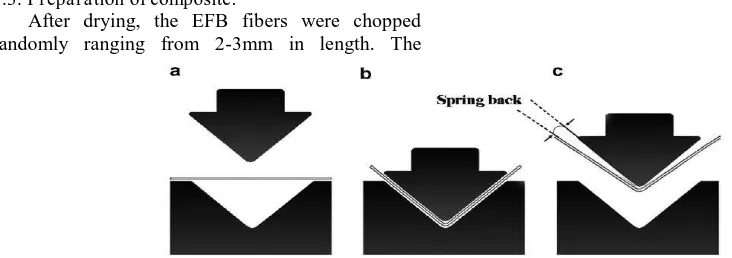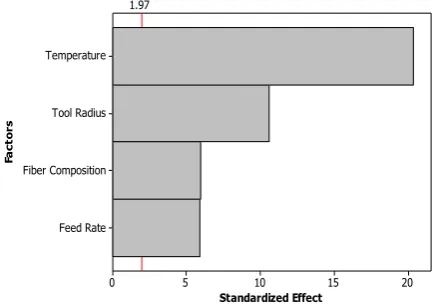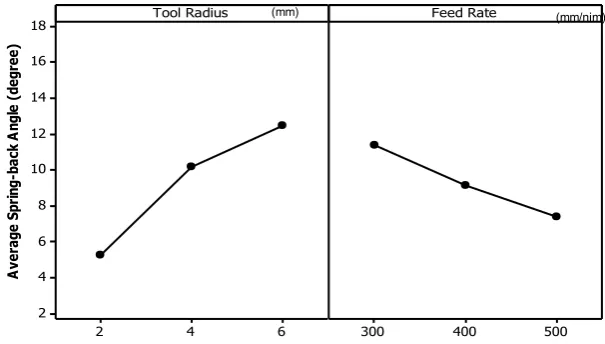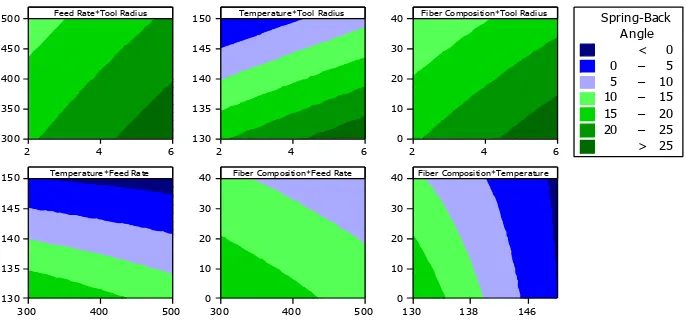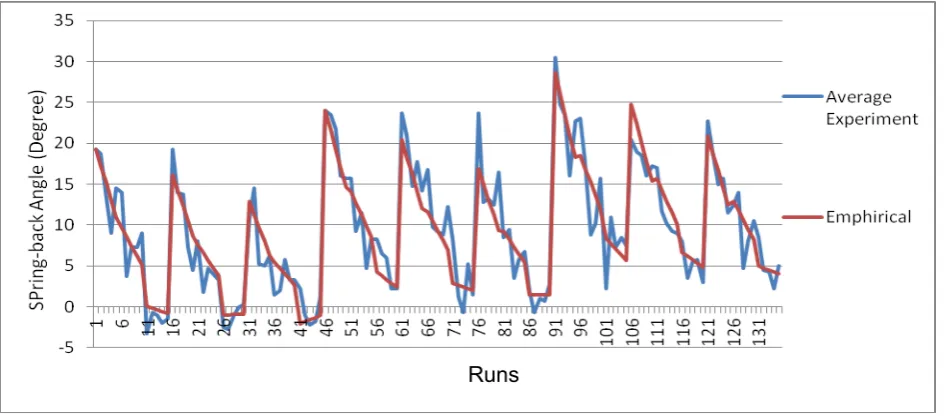American-Eurasian Journal of Sustainable Agriculture
ISSN: 1995-0748
JOURNAL home page: http://www.aensiweb.com/aejsa.html 2014 Special; 8(4): pages 141-147.
Published Online 2014 June 20. Research Article
Corresponding Author: Sivakumar Dhar Malingam, Faculty of Mechanical Engineering, Universiti Teknikal Malaysia
Melaka, Malaysia,
Tel: +0162330813, Fax: +6062346884, E-mail: [email protected].
A Study on the Mechanical and Forming Performance of Oil Palm Fiber Reinforced
Polypropylene Composite
1Muhammad ‘Ammar Bin Che Mahzan, 1Sivakumar Dhar Malingam, 2Sivaraos, 1Mohd Zulkefli Bin
Selamat, 1Md Radzai Bin Said
1Center of Advanced Research on Energy (CARE), Faculty of Mechanical Engineering, University Teknikal Malaysia Melaka, 76100 Durian Tunggal, Melaka, Malaysia. 2
Faculty of Manufacturing Engineering, University Teknikal Malaysia Melaka, 76100 Durian Tunggal, Melaka, Malaysia.
Received: 28 February 2014; Revised: 25 May 2014; Accepted: 6 June 2014; Available online: 20 June 2014
© 2014
AENSI PUBLISHER
All rights reservedABSTRACT
Background: Composite materials have steadily gained recognition worldwide for its uses in various sectors such as aerospace,
infrastructures and automotive industries. Natural fibers are gaining recognition as a substitute to synthetic fibers due to its recyclability and abundance. Palm fiber reinforced polypropylene composite panels have potential to be stamp formed in order to build complex geometries. In stamp forming the most sensitive feature is elastic recovery during unloading. This phenomenon will affect the net dimension of the final product. Objective: To identify the effects of forming rate, tool radius, temperature and ratio of fiber to polypropylene on the spring-back of palm fiber composite. To deduce an empirical model in predicting spring-back. To investigate the effect of fiber composition on its tensile strength. Results: Statistical analysis conducted shows all the studied parameters gives significant effect towards spring-back. The higher the temperature, feed rate and fiber composition (up to 30wt %) the smaller the spring-back and it is vice versa for tool radius. An empirical model was formulated to predict the spring-back angle. 30wt% of fiber composition was found to give the highest tensile strength. Conclusion: The suggested temperature, fiber composition, tool radius and feed rate to get the smallest spring-back angle in the current study are 150 °C, 30wt%, 2mm and 500mm/min. While the fiber composition of 30wt% shows the highest tensile strength.
Keywords: Oil palm fiber; composite; stamp forming; V-bending; spring-back; tensile strength.
INTRODUCTION
Fiber reinforced polymer composites have played a dominant role for a long time in a variety of applications for their high specific strength and modulus. Fiber can be classified into two groups that are natural fiber and synthetic fiber. For natural fiber, it is made from animal, mineral and plant while for polymer, metal and glass, it comes from synthetic fiber. However, due to the problems of synthetic fibers regarding its recyclability, costs and the environmental effects, the interest for composite using natural fibers have grown rapidly [2].
About 27 million acres of oil palm is produced in 42 countries worldwide and from them, Malaysia is one of the world’s largest producer and exporter of oil palm. The oil palm industry not only produces
crude palm oil as the main product but also generates a huge amount of biomass in the form of trunks, fronds and empty fruit bunch (EFB). By exploiting these kinds of waste materials, it does not only maximize the use of oil palm but also helps to preserve natural resources and maintain ecological balance [6].
the most sensitive feature is elastic recovery during unloading called spring-back. This phenomenon affect bend angle and bend curvature.
Current researches done on palm fiber composite had mainly focused on tensile and flexural properties. Stamp forming behaviour of thermoplastic based palm fiber composite (PFC) is yet to be well understood, thus there is great need to study this behaviour in order to improvise material characteristics in the production processes.
2. Objectives:
The objectives of the current work are to identify the effects of forming rate, tool radius, temperature and wt% ratio of fiber to polypropylene (PP) on the spring-back of palm fiber composite. To deduce an empirical model in predicting spring-back. To investigate the effect of fiber composition on its tensile strength.
Materials and Methods
3.1. Material:
Three types of raw materials were used in this research, namely empty fruit bunch (EFB) fiber acting as the reinforcement, commercial Polypropylene (PP) acting as the matrix and Maleic anhydride grafted Polypropylene (MaPP) acting as the coupling agent for the composite.
3.2. Fiber treatment:
The EFB fibers were soaked in a 2% sodium hydroxide (NaOH) solution at room temperature for 30 minutes. Then the EFB fibers were filtered out and washed several times with water until all the sodium hydroxide was eliminated [5].
3.3. Preparation of composite:
After drying, the EFB fibers were chopped randomly ranging from 2-3mm in length. The
chopped fibers were then mixed with PP and MaPP using an internal mixer at a speed rate of 50rpm, temperature of 190oC for 12 minutes. 3wt% MaPP were added in the mixture as it was found to be optimum for good adhesion between fiber and matrix by previous researchers [1,3,4].
The composite materials were later crushed to form pallet size composite. The pellet size composites were placed in a 200mm x 200mm x 2mm mold and heated in a hot press machine. The mixture is molded into sheets by hot pressing at 190°C at a pressure of 95 kgf/cm2 for 6 minutes followed by cool pressing at 95 kgf/cm2 for 6 minutes.
3.4. V-bending:
The composite plates were cut into rectangular shapes with dimension of 180mm x 20mm x 2mm. These specimens were placed into a convection oven and preheated to the required forming temperature after which it was removed from the oven and positioned upon the female die of the V-bending tool as shown in Fig. 1. Next the sheet specimen was stamped by punching the male punch into the female die, simultaneously cooling and solidifying the composite material. Once the specimen had completely cooled, the punch was withdrawn and the composite specimen removed.
The V-bending was performed with varying temperature, fiber composition, feed rate and tool radius. The main factors and parameters used are shown in Table 1. The temperature was chosen to be between PP glass temperature and under its melting temperature of 160oC to ensure the sample would not melt and lose its shape.
Fig. 1: V-bending of a sheet material: (a) composite sheet placed over female die; (b) sheet formed by male
punch into female die; and (c) male punch moves upward and material released(Velayudhan et al. 2007).
Table 1: Main Factors and Parameters used in V-bending
Tool Radius(mm) Feed Rate (mm/min) Temperature (°C) Fiber Composition (wt %)
2 300 130 0
4 400 140 10
6 500 150 20
- - - 30
3.5. Tensile Test:
Tensile tests were carried out using an universal testing machine with a load cell of 10 kN. Tests were performed as specified in ASTM D 3039. The testing was done under room temperature. The gauge length was 40 mm and the crosshead speed of testing was 0.1 mm/min. Three specimens were tested for each batch. The tensile strength (TS) was taken for analysis.
3.6. Design of Experiment (DOE):
A full factorial design of experiment was used to analyze the effect of fiber composition, tool radius, feed rate and temperature on the spring-back of palm fiber composite (PFC). Factorial designs allow for the simultaneous study of the effects that several factors may have on a process. When performing an experiment, varying the levels of the factors simultaneously rather than one at a time is efficient in terms of time and cost, and also allows for the study of interactions between the factors. In order to determine whether the experiment is reliable, the R-Sq value must be above 50%. The closer it is to 100% the more reliable the data from the experiment. R-Sq is the proportion of the variability in the response that is explained. To determine whether the factor brings significant effect, the P-value is
compared with the α-value. If the P-value is lower
than α-value, then it can be considered as significant.
The α-value is the maximum acceptable level of risk for rejecting a true null hypothesis (type I error) and is expressed as a probability ranging between 0 and 1. Alpha is frequently referred to as the level of significance. For this research, the confidence level is 95% thus the α-value was set at 0.05. While the P-value is the probability of obtaining a test statistic that is at least as extreme as the calculated value if the null hypothesis is true. All the main factors were inserted in the full factorial design matrix built with statistical software, Minitab 16. A total of three sets of 135 runs each were conducted to complete the full factorial design.
Results and Discussion
4.1 V-bend:
Based on the results generated by the statistical software, the R-Sq value is 72.10% and all of the factors showed significant effect towards spring-back of PFC with temperature showing the largest effect on spring-back followed by tool radius, fiber composition and finally feed rate as illustrated in Fig. 2.
Fig. 2: Pareto chart of the standardized effects.
Fig. 3 shows the response of main factors, temperature and fiber composition with respect to the average spring-back angle. The change in temperature affects the average spring-back angle the most. This happens as a result of preheating the samples above its glass transition temperature or Tg.
During Tg, the material will undergo a transition
phase from a hard and relatively brittle state into a molten or rubber-like state. When the PP temperature is at 140°C, the PP molecule chains can move more freely. Thus, when PFC is punched by the male die into V-bend shape, the PP molecules easily moves into new positions to relieve the stress applied. When PFC is being formed below its Tg, the polymer
chains would not be able to move into new positions
to relieve the stress which have been placed on them. In this condition two possible outcomes are either the chains are strong enough to resist the force applied, and the PFC would not bend or the force applied will be too much for the motionless PFC chains to resist, and being unable to move around to relieve the stress, the PFC will develop micro crack or break. Fig. 3 shows that at forming temperature 150°C, the spring-back of PFC is the smallest with a mean angle of 2.61°.
difficult for the sheet to stretch and conform. However, 40wt% of fiber composition produces larger spring-back than 30wt% of fiber composition. It may be implied that although the matrix shears, the
fiber network maintains partial fiber entanglement
and distorts elastically thus resulting in the increase in spring-back. Fig. 3 shows at fiber composition of 30wt% the average spring-back of PFC is the smallest with an average of 7.31°.
While in Fig. 4 it shows that as the tool radius increases, the average spring-back also increases. This is due to the fact that smaller tool radius will produce higher stress concentration on the material bend region. After that, higher stress concentration will result in increasing the tensile stress at the outer surface of the material. Therefore, as the tensile stress increase, more surface will experience plastic strain and the ability of the specimen to spring-back decreases. This will result in higher rate of shape conformance or lower deviation angle of the specimen. Fig. 4 shows at tool radius of 2mm the average spring-back of PFC is the smallest with an average of 5.29°.
Furthermore in Fig. 4, as the feed rate increases, the spring-back also increases. This was attributed to
the capacity to complete the stamping process before the composite cooled. Higher feed rate can reduce shape error and delamination. Fig. 4 shows at feed rate of 500mm/min the average spring-back of PFC is the smallest with an average of 7.39°.
Fig. 5 shows the contour plot of spring-back angle with respect to temperature, feed rate, tool radius and fiber composition. Due to the limitation in temperature as mention previously, we can only preheat the sample up to 150°C before the samples starts melting. For feed rate and tool radius it shows that as the feed rate increases and the tool radius decreases, the spring-back angle decreases. This attribute is also present when the temperature and fiber composition increases, the spring-back decreases. However, when the fiber composition is at 40wt% and temperature is 150°C, the spring-back angle becomes less than zero. This phenomenon is called spring-forward or spring-go. When bending thermoplastic composite materials, spring-forward commonly occurs due to the thermal expansion anisotropy. The extent of deformation which results from the anisotropy of thermal expansion becomes greater as the temperature range is increased.
150
Fig. 3: Main effects plot for temperature and fiber composition versus spring-back angle.
6
Fig. 4: Main effects plot for tool radius and feed rate versus spring-back angle. C(
O
) )tw%(
Feed Rate*Tool Radius research, the favorable combination of temperature, fiber composition, feed rate and tool radius are 150°C, 30wt%, 500mm/min and 2mm for minimum spring-back angle on the PFC.
An empirical equation is produced from
Table 2: Coefficient of the factors.
Terms Coefficient
Tool Radius*Feed Rate -0.00164583
Tool Radius*Temperature -0.0122917
Tool Radius*Fiber Composition -0.0121528
Feed Rate*Temperature 0.00107083
Feed Rate*Fiber Composition 0.000227778
Temperature*Fiber Composition 0.00947222
When the average experimental spring-back was compared with the empirical result, the trend is quite similar to each other as shown in Fig. 6. For run 45 and run 46, we can see that the spring-back increases from 1.25° to 24°. This was due to the difference in temperature. As explained previously, temperature plays a huge role in the spring-back angle of the oil palm fiber composite. At run 45, the temperature was 150°C while at run 46 the temperature was 130°C. This attribute can be seen for all of the samples pre-heated at 150°C and 130°C. Based on the empirical equation, the expected spring-back angle for the parameter of temperature 150°C, fiber composition 30wt%, feed rate of 500mm/min and tool radius of 2mm is -1.29° while experimentally it was -1.75°.
4.2. Tensile Test:
The highest value of TS was found at 30 wt% fiber composition as shown in Fig 7. At 40wt% fiber composition, fiber agglomeration might occur, which results in reduction of strength. At 10wt% fiber
composition, the tensile strength is low could be attributed to the weak interfacial adhesion or interaction between the PP matrix and the EFB fibers. Poor interfacial bonding between the fibers and the matrix cause inefficiency of stress transfer when stress is applied on a tensile specimen. These interfaces are the weakest part of the composite and serve as failure part of the composite and as failure initiation points. As the fiber composition increases the interfacial bonding between the PP matrix and the EFB fibers become better hence increasing its tensile strength.
5. Summary:
smallest spring-back angle for PFC are 150°C, 30wt% and 500mm/min. Based on the tensile test being done, it shows fiber composition of 30 wt% has the highest tensile strength. Hence the optimal
fiber composition for oil palm fiber composite is 30 wt%. This work deduce oil palm fiber composite has high potential to be stamp formed.
Fig. 6: Experiment result versus Empirical result.
Fig. 7: Tensile Strength.
Acknowledgments
The authors would like to thank the Ministry of Education Malaysia for granting a Research Acculturation Grant Scheme (RAGs) to undertake this study.
Authors’ Contribution:
Sivakumar DharMalingam, Sivaraos, Mohd Zulkefli Bin Selamat and Md Radzai Bin Said developed the idea, tools and had an important role in the result and material section.
Muhammad ‘Ammar Bin Che Mahzan performed
the experiment, statistical analysis, the discussion.
Fina ncial Disclosure:
There is no conflict of interest.
F unding/Support:
Ministry of Education Malaysia’s Research
Acculturation Grant Scheme (RAGs) to undertake this study.
References
1. Beg, M.D.H. and K.L. Pickering, 2008. Mechanical performance of kraft fibre reinforced polypropylene composites: Influence of fibre length, fibre beating and hygrothermal ageing. Composite Part A: Applied Science Manufacturing, 39(1): 1748-1755.
2. Bhattacharya, Debes, Martyn Bowis and Krishnan Jayaraman, 2003. Thermoforming
woodfibre polypropylene composite sheets.
Composite Science and Technology, 63(1): 353-365.
3. Cho, K., F. LI and J. Choi, 1999. Crystallization and melting behavior of polypropylene and maleated polypropylene blends. Polymer, 40(1): 1719-1729.
4. Lu, J.Z., Q. Wu and I.I. Negulescu, 2005. Woodfiber/ high-density-polyethylene Composites: Coupling Agent Performance. Journal of Applied Polymer Science, 96(1): 93-102.
5. Norul Izani, M.A., M.T. Paridah, U.M.K.
Anwar, M.Y. Mohd Nor and P.S. H’ng, 2012.
Effects of fiber Treatment on Morphology
Tensile and Thermogravimetric Analysis of Oil Palm EFB Fibers. Composites: Part B: Engineering, 45(1):1251-1257.
6. Teo, D.C.L., M.A. Mannan and V.J. Kurian, 2006. Structural Concrete Using Oil Palm Shell
(OPS) as Lightweight.” Turkish Journal of Engineering Environment Science, 30: 251-257. 7. Velayudhan, Shiny, P. Ramesh, H.K. Varma, S.
